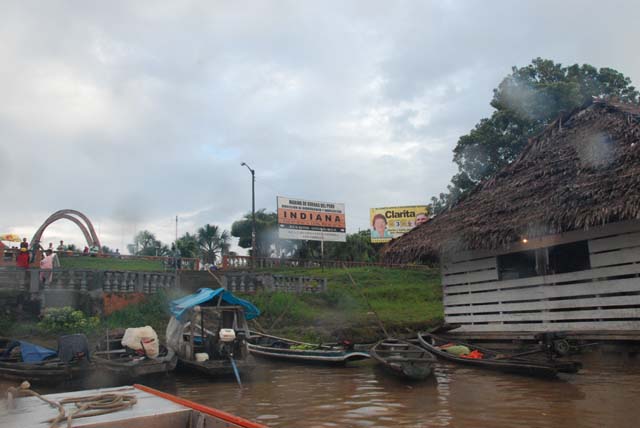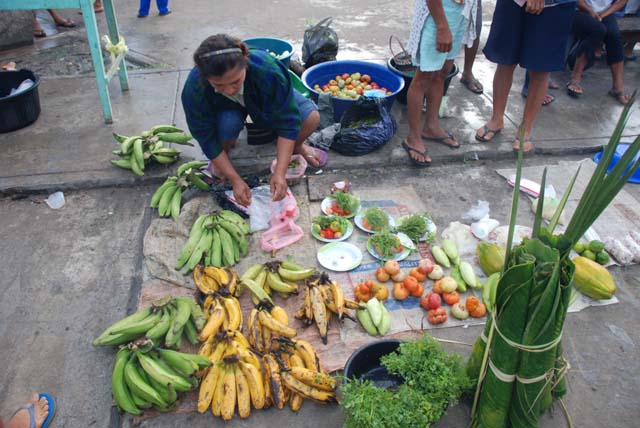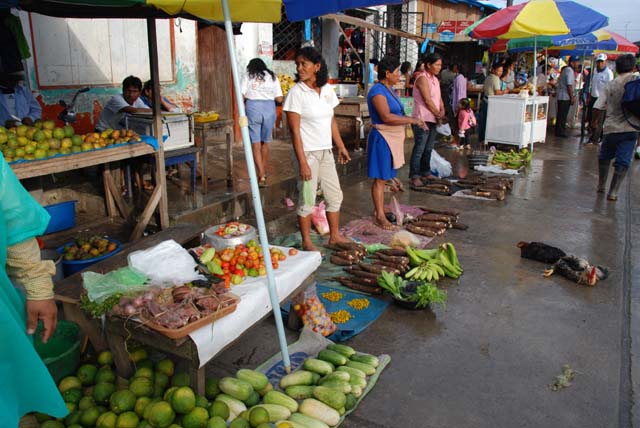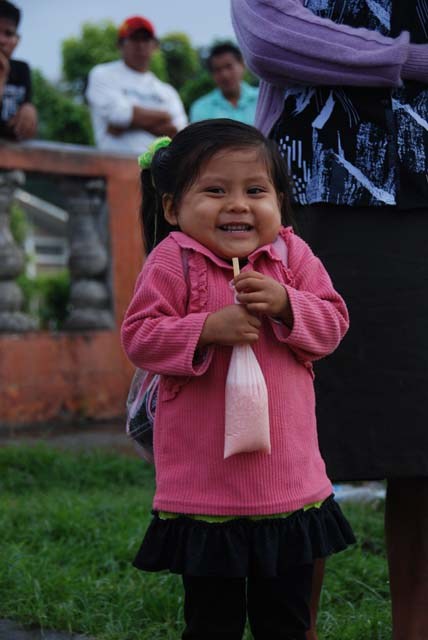Along the Inca Road
March 22, 2010
Amazon River, Peru
Today is our last day along the Amazon. An early morning bird
watching run turned into a spontaneous visit to the town of Indiana, which
is down river from Iquitos.
The morning rain was not helpful as we crossed south towards
the banks of Yanamono Island to see what birds we would find this fine dizzly
wet morning. There were birds but they were hiding in the branches to stay
out of the rain. They weren't crazy like the the dumb bird watchers who where
zig-zagging their way across the narrow channels off the main river looking
for them.
Nonetheless, we did see a couple of unusual feathererd friends.
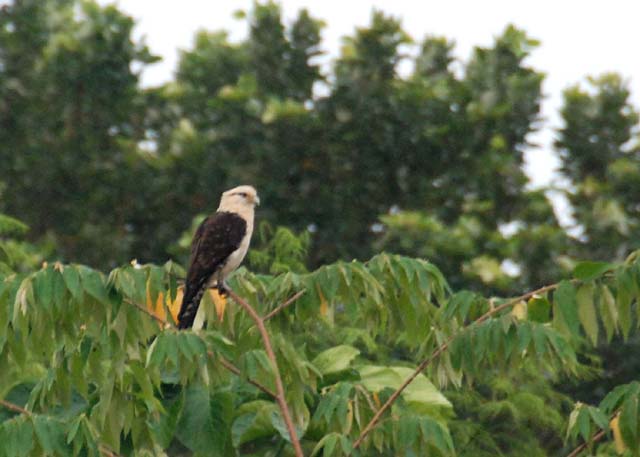
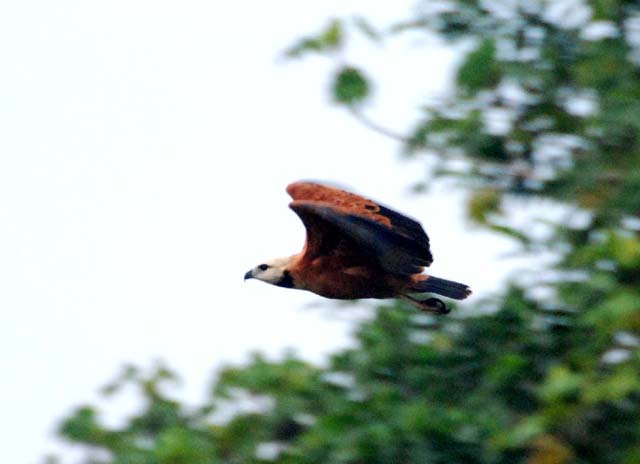
A Yellow-headed Caracara Milvago chimachima, a falcon and a Collared
Black Hawk Busarellus nigricollis, an acciptier that feeds on fish and
other small prey.
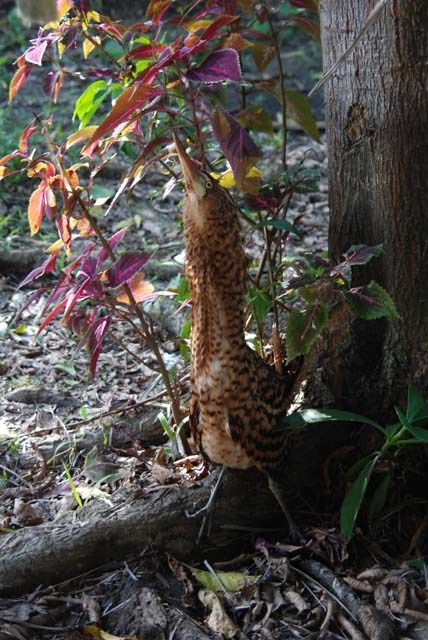
A immature Rufous Tiger Heron, Tigrisoma lineatum, in the classic
threat position. This one had fallen out of its nest.
After deciding the birds were not going to cooperate Pablo
took us back to the north side of the river into the town of Indiana. Today
was market day and suddenly bird watching was on the back burner.
The village of Indiana gets its name from a former resident who went to Indiana
to study and then returned to Peru and renamed the town in honor of his new
state.

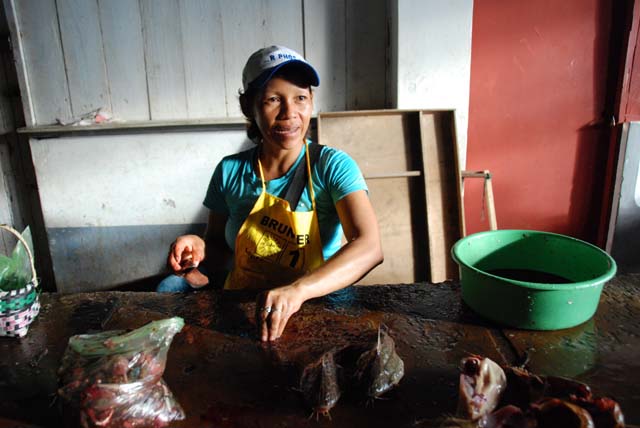
Fresh poultry and catfish.
All types of fruits and vegetables. The dark tubers are manioc, a staple.
This little girl finally smiled after I crossed my eyes at her.
After spending time at the Indiana we headed back to pick up
the rest of the group to visit a village on Yanamono Island. We were also going
to visit an elementary school on the island. Once again we crossed the river,
this time we entered a small inlet beyond the flats where the dolphins can
be found. The inlet widened and it appeared the rain was going to lift as well.
On our left an opening along the bank reveled a place we could use to get on
shore.

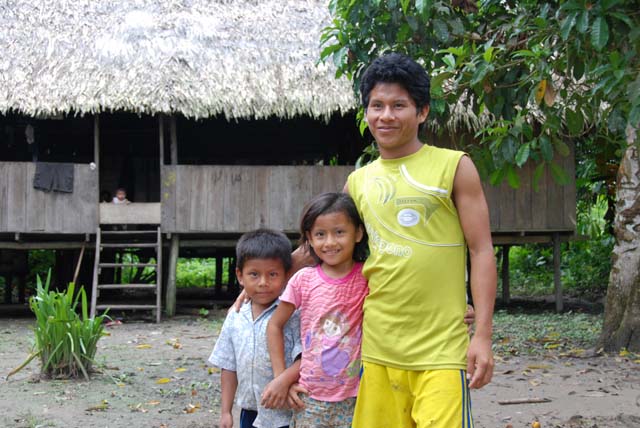
Joan being helped on shore. We had a welcoming committee as
we arrived. Big brother and his little sister and brother.
Pablo explained how the people on the island farm this high
ground, growing rice when the river is down and other crops such as bananas,
cassava, manioc and corn. We walked down a well worn path until we came to
suspension bridge crossing another inlet. The bridge took us to a larger section
of the village. We were invited into a house to see how the local live along
the river.
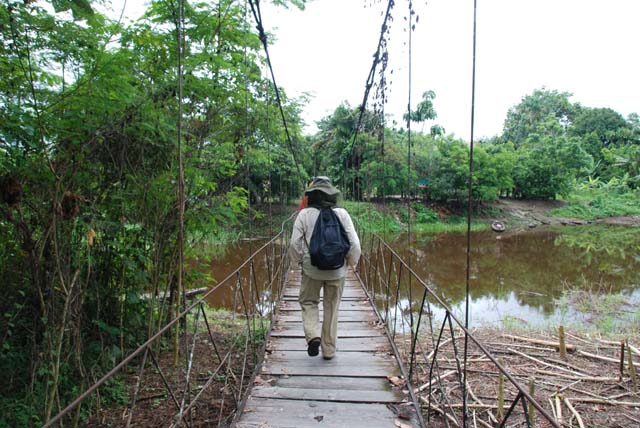
Walking across an inlet to the other part of the village.
These bridges are strung with cable and have wooden planks for the walking surface.
They sway as you walk across the inlet.
The house we visited is built on pilings and consists of two
sections, a living section and a detached kitchen or cooking section.
The living section is open and on either side were two bedrooms, one for the children and one
for the adults.
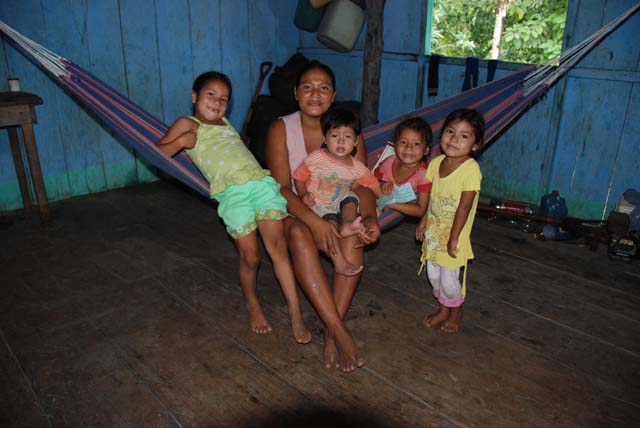
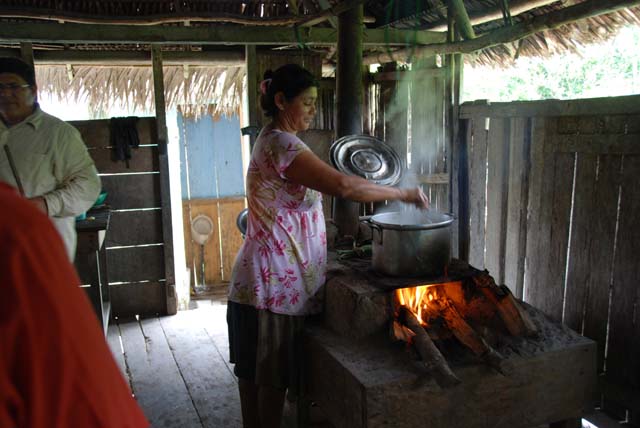
The family lined up for a portrait. The kitchen, which is a separate room contains a stove made of adobe which is quite adequate for cooking.
After spending time with the family we walked down to the school.
The head teacher introduced the two other teachers and their classes. The
children sang the Peruvian national anthem for us and then they asked us questions?
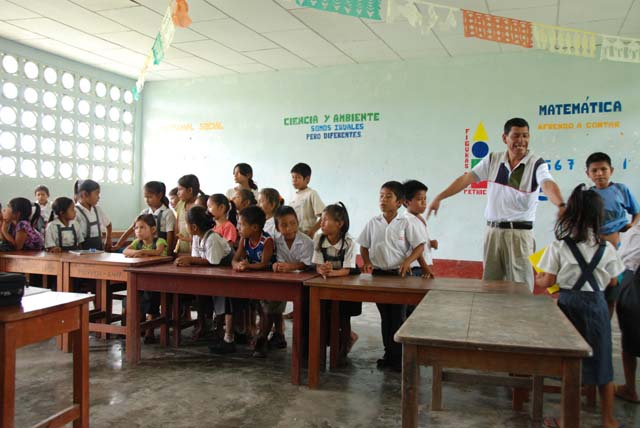

Where do you live? How many children do you have? After these
questions we sat with the children as they showed us their homework tablets.
Before long it was time to leave the school. As we headed back
across the river to our lodge we felt we had gotten a good taste of the Amazonian
rainforest,
bugs and all. Of course, mosquitos were the one insect which
will always remain with us as the number one nusance on the trip. They come
in different flavors. Some are obvious and noisy with their constant buzzing
and then there are the stealth mosquitos. These are not seen, heard, nor
are they felt when the bite. But, later in the evening you will discover many
welts
about your face, hands and legs were the stealth mosquitos have been. It
was ironic
Before we knew it the time had come to leave Ceiba Tops Lodge
and head up river to Iquitos to catch the evening plane to Lima. The flight
was uneventful and we landed in Lima on time. A short bus ride to the hotel
ended our adventures in the Amazon rainforest.
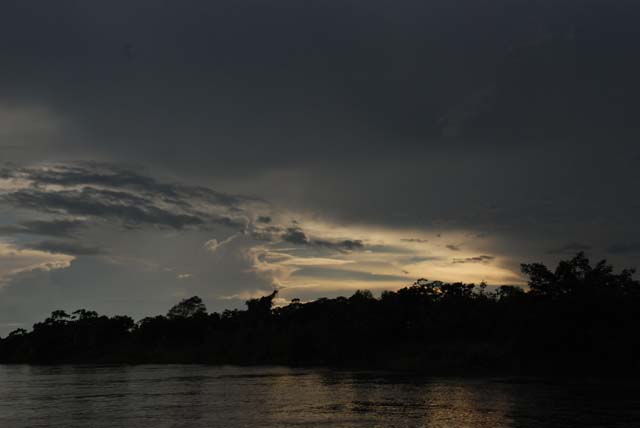
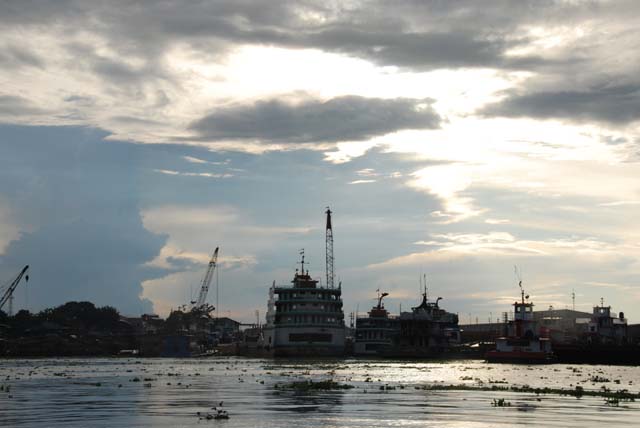
Heading up river we saw our last sunset over the Amazon. Approching Iquitos more
ocean going ships were moored in the river's harbor. Yes, the river has a harbor.
The Atlantic Ocean is 2300 miles down river and with an average depth of 60+
feet ocean going ships make the journey upriver in a couple of weeks.
Tomorrw we would be in Lima preparing to fly to Cusco and the
Andean highlands.

Our motely jungle crew with our guide Pablo Hoyos at Iquitos
Airport.
Back to the
Home page
More
Galván Trips & Travel Posts
Copyright 2011 Anthony Galván
III



